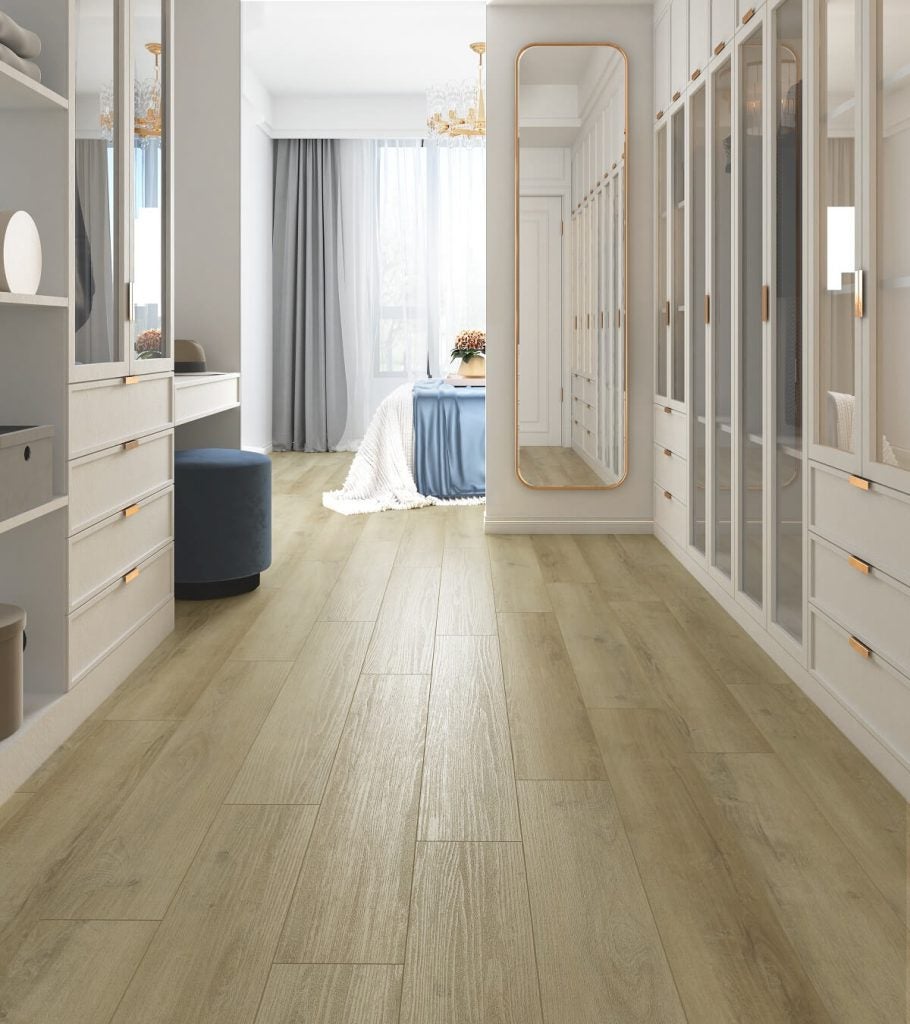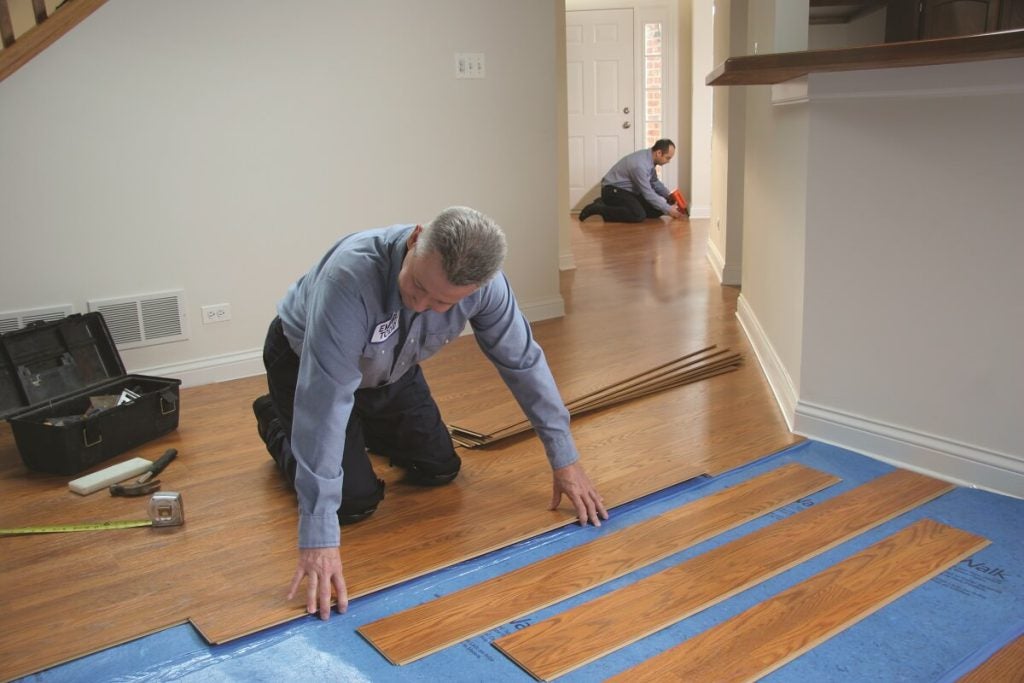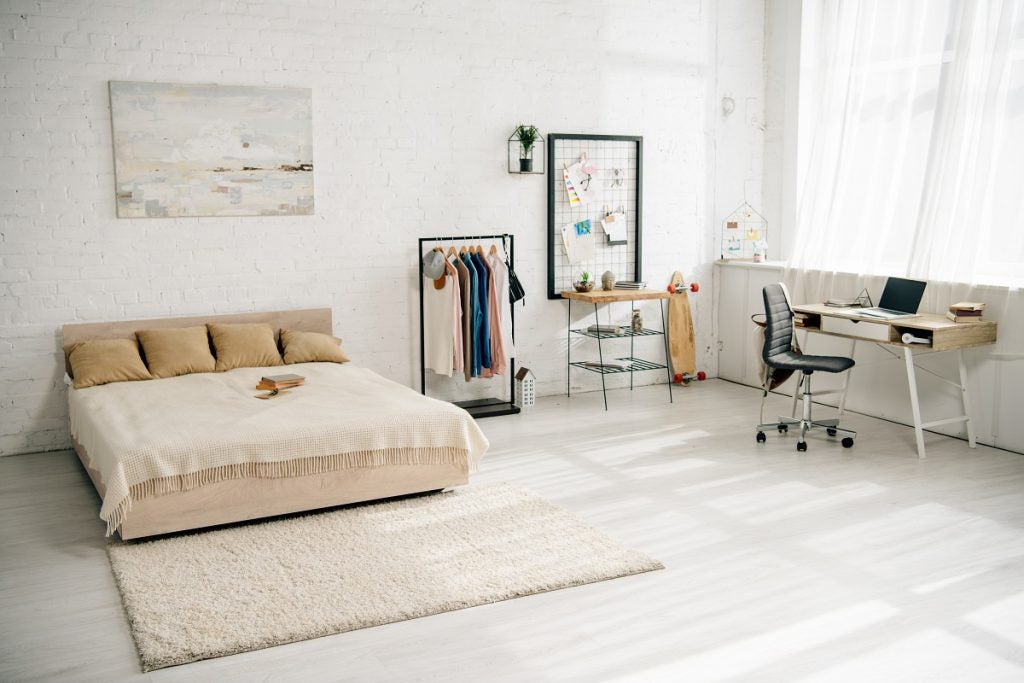It’s a common sentiment among many homeowners: at some point, parts of their home will begin to feel too small. While in many cases it’s a functional desire—that is, they actually do need more space in their homes—oftentimes it’s simply a matter of perception. A room often “feels” too small simply because of particular design choices. While an actual lack of needed space can only really be solved with an in-depth renovation that includes knocking down walls or adding on extra square footage, there are a few other tactics that can help make a small room look bigger—especially if you’re already planning on having new floors installed.
Making a small room appear larger might sound like a job that only the TARDIS can achieve, but it’s really as simple as taking advantage of some tricks of optics and the way the human brain perceives things. Just like common optical illusions, smart design can utilize color and lines to make objects and rooms appear larger or smaller than they actually are. Taking advantage of some of these simple tricks when you get new floors installed can result in marked differences in the apparent roominess of your home.
Fewer Seams in a Room Make a Room Seem Larger
Tile and hardwood flooring (or any type of wood-look flooring) present various possibilities for using simple illusions to give the appearance of a larger room. If you’re deciding on new tile or wood flooring for a room that feels cramped, one very popular suggestion is to choose the largest size of either product that still meets your needs. So, for hardwood, consider wide-plank wood flooring, which would be any wood-look product whose individual planks are seven inches or wider. When choosing tile, something in a large format—longer than 15 inches on the long side—is recommended.

The larger and longer the tile or wood plank used in a room, the fewer seams there will be across the total floor. That lack of busyness gives the impression of a larger continuous surface, making a room feel more spacious.
Proper Hardwood Orientation Can Lengthen a Room
Another consideration is the orientation of your wood planks in relation to the dimensions of your room. By having your wood flooring installed parallel to the longest wall in a particular room, the leading lines of the floor draw your attention to that dimension, emphasizing its length.
On the flip side, it’s not recommended to use busy hardwood patterns in a smaller room. That means no complex borders or decorative inlays, and you might even want to stay away from herringbone and other elaborate hardwood floor installation styles.
Choose the Same Product for Every Room on a Floor
It’s common practice in many renovations to have the floors in every room in a home replaced all at once. If a plan like this is on your horizon, there are a few design tricks that you can use to help give the appearance of more space throughout the home.
First, consider using the same flooring in all of the rooms. This consistent look reduces the contrast between each room, creating a uniformity that gives the illusion of a larger continuous space.

Extending that same flooring to the shared hallways can further increase this illusion. And if taking this tactic, you may, in some cases, be able to omit the threshold strips that are typically used in doorways to cover the seam where two different flooring types meet. Going without a threshold will further add to the illusion of one larger continuous space.
Choose Light Colored Floors
One common idea that runs through nearly all facets of interior design is the concept that lighter colors tend to make a room feel larger. Surfaces finished in whites, yellows, and pastels reflect light and create an airiness that can increase the apparent spaciousness of a room. While this theory is often used to determine paint shades, it’s equally applicable to the color of your floors. When redoing a small bedroom or office, consider options like a cream carpet or a light wood-look floor to keep it from feeling too cramped.
Keep the Floor Clutter to a Minimum

While this is not directly related to the specific flooring products you choose, it’s a helpful tip that can actually be achieved at no cost. Keep as much of your floor open and as visible as possible. Ever stood around in an empty apartment after you’ve packed everything up before a move? The space probably looked significantly larger than it did when it was packed with furniture, plants, and knick-knacks. Every significant item you leave resting on your floor ends up being a double-whammy. It physically reduces the available space in any room, and it also makes a room look and feel smaller. Next time you consider filling an empty space along your wall with something, just for the sake of placing something there, think about how it might make the room feel more crowded.
Choosing new flooring can be a long, stressful process. Add in some more complex design theories like the ideas listed above, and it can feel like a dark art. At Empire Today®, we understand that difficulty, and we are here to help. If you’re just starting out on your floor shopping journey, check out our Room Visualizer to get a better idea of how a particular floor will look in any room in your home. Or, simply schedule your no-obligation in-home estimate, and a flooring professional will visit you with a full assortment of products from Empire®, letting you see and feel them in the comfort of your own home.
Get the latest updates delivered to your inbox.